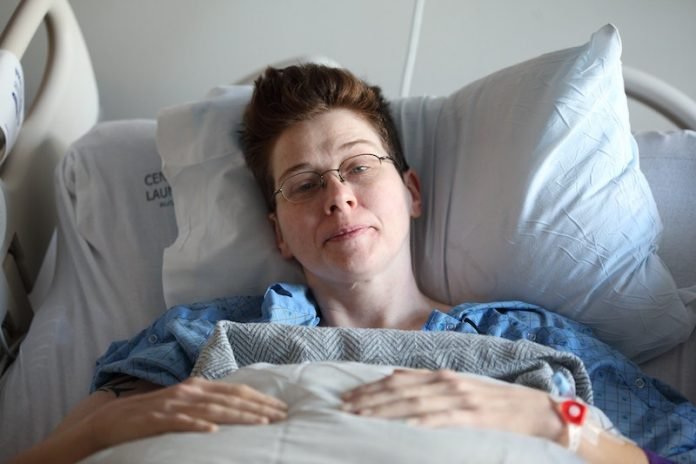
One of the biggest and most life-threatening mysteries in COVID-19 is how the virus causes “silent hypoxia,” a condition when oxygen levels in the body are abnormally low, which can irreparably damage vital organs if gone undetected for too long.
In a new study at Boston University and elsewhere, researchers have begun to crack the mystery.
Despite experiencing dangerously low levels of oxygen, many people infected with severe cases of COVID-19 sometimes show no symptoms of shortness of breath or difficulty breathing.
Hypoxia’s ability to quietly inflict damage is why it’s been coined “silent.”
In the patients, it’s thought that the infection first damages the lungs, rendering parts of them incapable of functioning properly.
Those tissues lose oxygen and stop working, no longer infusing the bloodstream with oxygen, causing silent hypoxia. But exactly how that domino effect occurs has not been clear until now.
In the study, the team used computer modeling to test out three different scenarios that help explain how and why the lungs stop providing oxygen to the bloodstream.
They found that silent hypoxia is likely caused by a combination of biological mechanisms that may occur simultaneously in the lungs of COVID-19 patients.
Normally, the lungs perform the life-sustaining duty of gas exchange, providing oxygen to every cell in the body as we breathe in and ridding us of carbon dioxide each time we exhale.
Healthy lungs keep the blood oxygenated at a level between 95% and 100%—if it dips below 92%, it’s a cause for concern and a doctor might decide to intervene with supplemental oxygen.
The researchers first looked at how COVID-19 impacts the lungs’ ability to regulate where blood is directed.
Normally, if areas of the lung aren’t gathering much oxygen due to damage from infection, the blood vessels will constrict in those areas.
This is actually a good thing that our lungs have evolved to do because it forces blood to instead flow-through lung tissue replete with oxygen, which is then circulated throughout the rest of the body.
But according to the team, the data suggested that the lungs of some COVID-19 patients had lost the ability to restrict blood flow to already damaged tissue, and in contrast, were potentially opening up those blood vessels even more—something that is hard to see or measure on a CT scan.
Using a computational lung model, the team tested that theory, revealing that for blood oxygen levels to drop to the levels observed in COVID-19 patients, blood flow would indeed have to be much higher than normal in areas of the lungs that can no longer gather oxygen—contributing to low levels of oxygen throughout the entire body.
Next, they looked at how blood clotting may impact blood flow in different regions of the lung.
When the lining of blood vessels get inflamed from COVID-19 infection, tiny blood clots too small to be seen on medical scans can form inside the lungs.
They found that this could incite silent hypoxia, but alone it is likely not enough to cause oxygen levels to drop as low as the levels seen in patient data.
Last, the researchers used their computer model to find out if COVID-19 interferes with the normal ratio of air-to-blood flow that the lungs need to function normally.
This type of mismatched air-to-blood flow ratio is something that happens in many respiratory illnesses, such as with asthma patients, and it can be a possible contributor to the severe, silent hypoxia that has been observed in COVID-19 patients.
Their models suggest that for this to be a cause of silent hypoxia, the mismatch must be happening in parts of the lung that don’t appear injured or abnormal on lung scans.
Altogether, their findings suggest that a combination of all three factors are likely to be responsible for the severe cases of low oxygen in some COVID-19 patients.
The findings can help clinicians make more informed choices about treating patients using measures like ventilation and supplemental oxygen.
One author of the study is Bela Suki, a BU College of Engineering professor of biomedical engineering.
The study is published in Nature Communications.
Copyright © 2020 Knowridge Science Report. All rights reserved.



